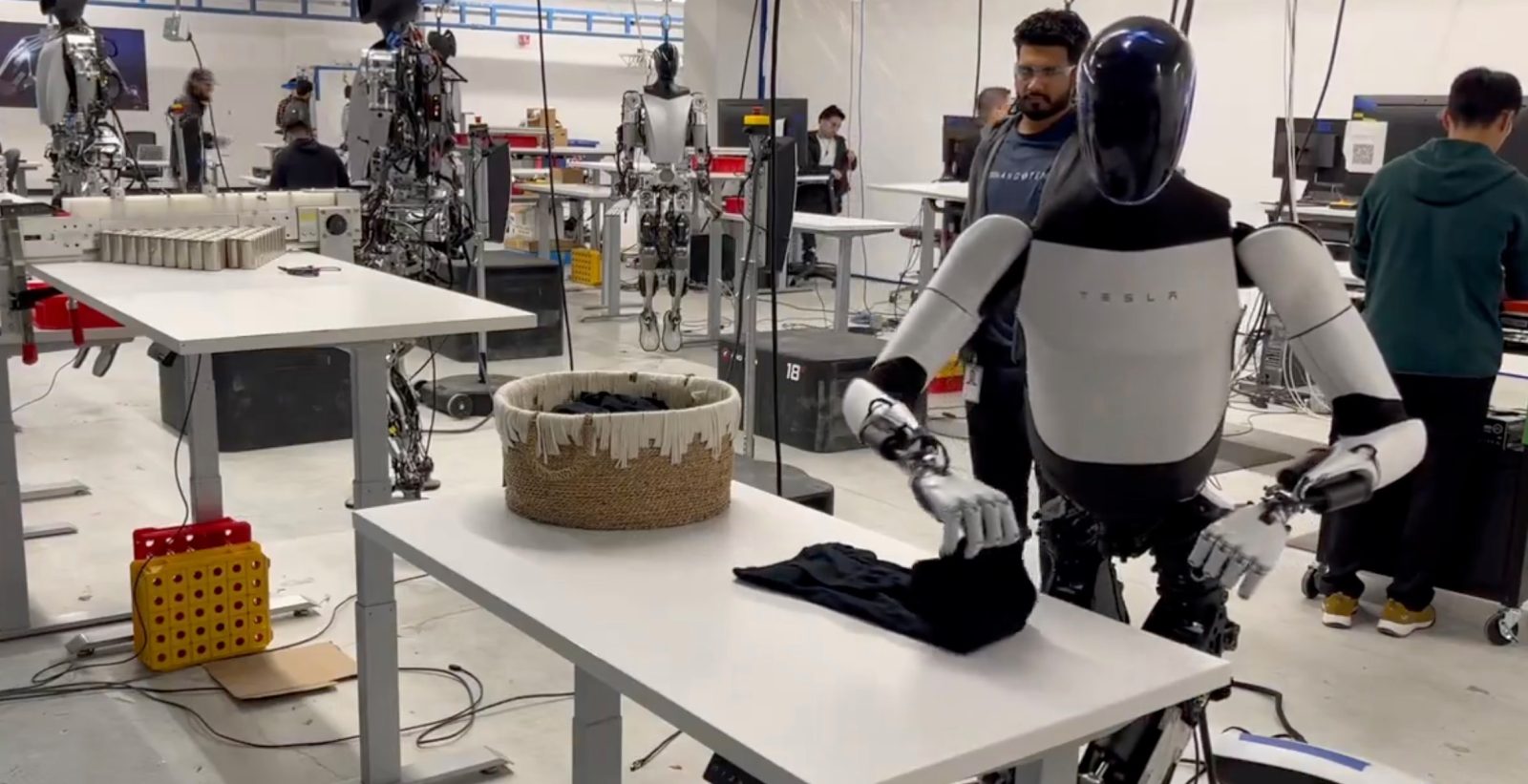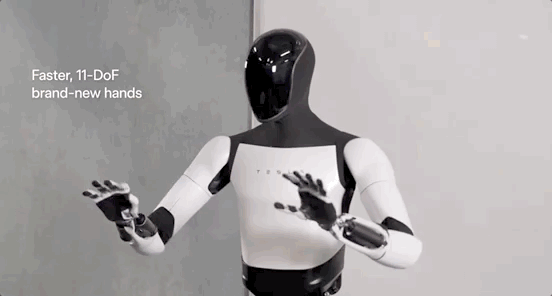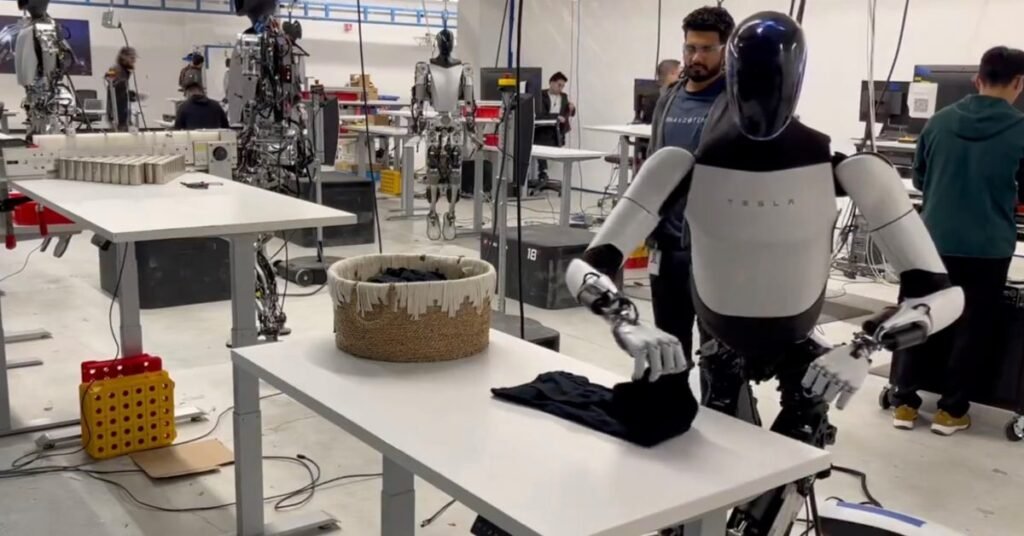
Tesla has unveiled some of its humanoid robot technology through the filing of several new patents related to its Optimus robot program.
A few months ago, Tesla announced Optimus Gen 2, a new generation of humanoid robots that can take over repetitive tasks from humans.
The new prototype showed many improvements compared to the previous, unsatisfactory version of the robot, giving the project some credibility.
One of the main changes in Optimus Gen 2 is the fact that Tesla uses custom actuators all designed in-house to power the robot’s limbs.
Currently, Tesla has filed several patents related to the technology behind its humanoid robot.
In its first patent, Tesla describes its “actuators and actuator design methodologies.”:
A system or methodology for controlling movement of a robot (600) using actuators. The system may include one or more first type actuators (1002) located at the torso, shoulders, and hips of the robot. one or more actuators of a second type (1004) located at a wrist location of the robot; and one or more actuators of a third type (1006) located at a wrist location of the robot. one or more fourth type actuators (1008) located at the elbow and ankle locations of the robot; One or more fifth type actuators (1010) are located at the torso and waist positions of the robot. One or more sixth type actuators (1012) are located at the knee and hip positions of the robot.
Below are some of the drawings from the patent application.


Interestingly, the original patent application drawings depict the original Optimus.
Other patent applications feature images of the new Optimus.
The next patent is called “System and Method for Robotic Knee Joint Assembly,” and as the name suggests, it specifically pertains to robotic knees.
Tesla describes the technology in its patent application:
Disclosed herein is a first link member mechanically coupled to the upper leg of the robot and having a first end configured to rotate about a first pivot relative to the upper leg; a second link member having a first end mechanically coupled thereto. on the robot’s lower limbs. The lower leg can be mechanically coupled to the upper leg and can be configured to rotate about a second pivot relative to the upper leg. A linear actuator device can be mechanically coupled to the second end of the first link member and the second end of the second link member, and when actuated causes the first link member to move onto the robot. It can be rotated about a first pivot relative to the leg. And rotate the leg around his second pivot relative to the upper leg.
Below are some of the drawings from the patent application.


The last patent application we found is particularly interesting, as it specifically relates to the Tesla Optimus needle.
This patent application is called “Low Actuation Hand with Cable Driven Fingers.”
Tesla writes in its patent application:
A robotic hand system can include a palm region and one or more fingers, each finger including an actuator device. The proximal member has a first end mechanically coupled to the palm area robot and is configured to rotate about a first pivot relative to the palm area. The distal member has a first end mechanically coupled to the second end of the proximal member and is configured to rotate about a second pivot relative to the proximal member. There is. The cable has a first portion coupled to the actuator and a second portion extending along the proximal and distal members, the second portion extending from the first pivot and the second pivot. The ends are spaced apart and have a dimension larger than the diameter of the actuator. The cable high-dimensional end is structured to engage the distal member when the cable is pulled by the actuator.
Below are some of the drawings from the patent application.



The latest sneak peek of Tesla’s latest robot prototype reveals significantly improved manual dexterity.

There is no clear timeline for Tesla to mass-produce the robot, but Tesla CEO Elon Musk said in 2022 that it could be produced as early as 2023. It didn’t happen.
Musk recently said robots will cost about half the price of cars.
FTC: We use automated affiliate links that generate income. more.

